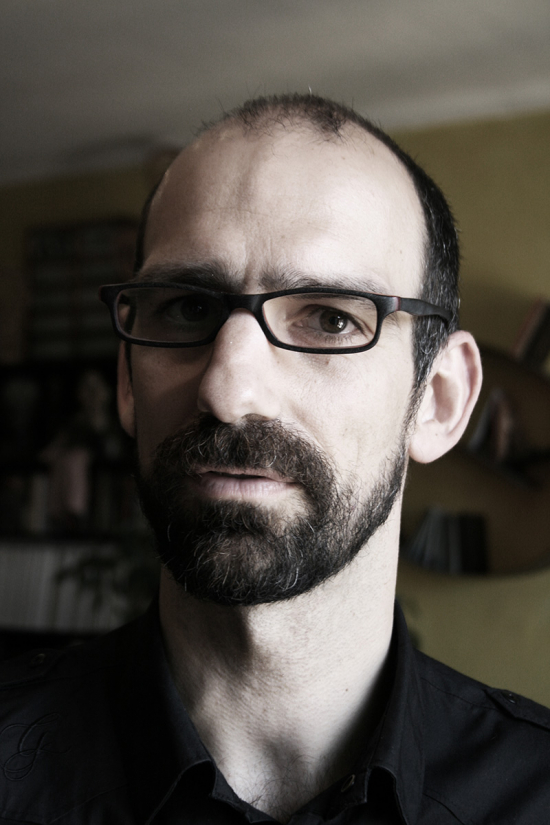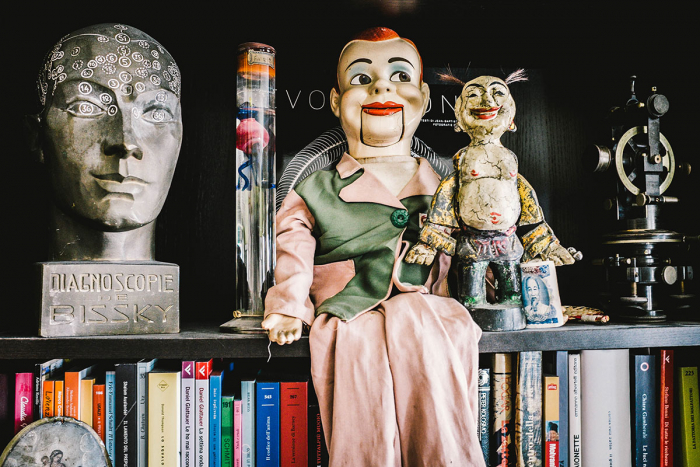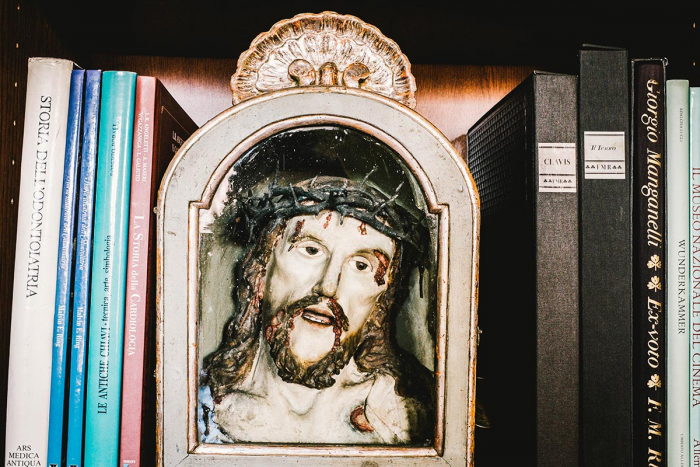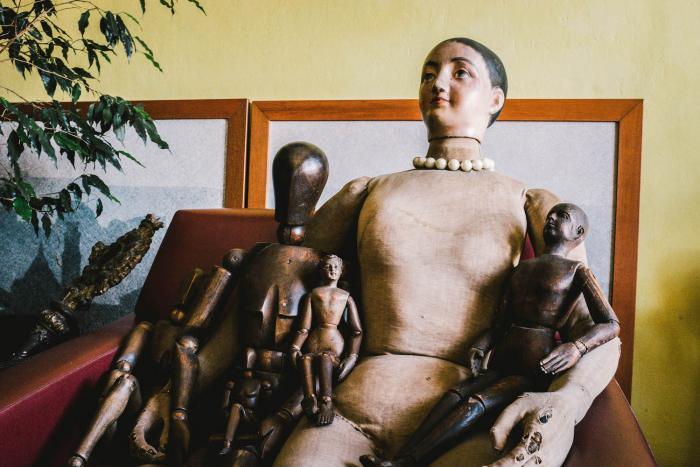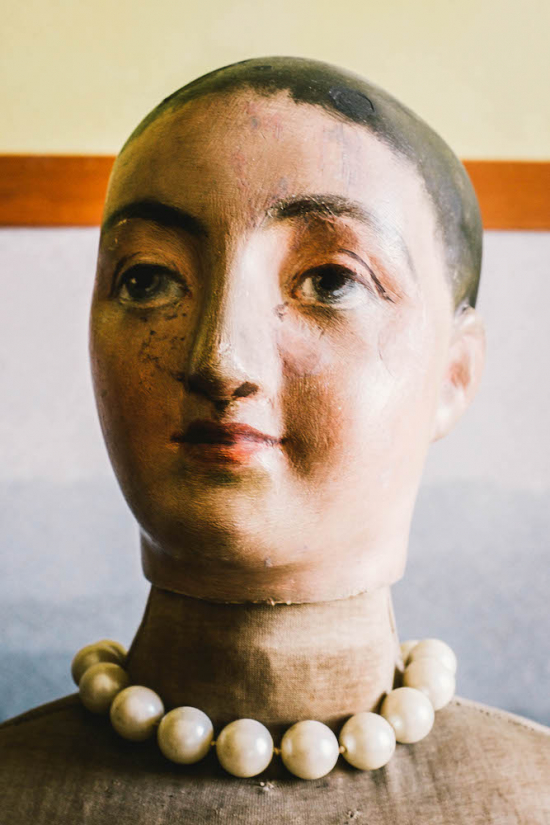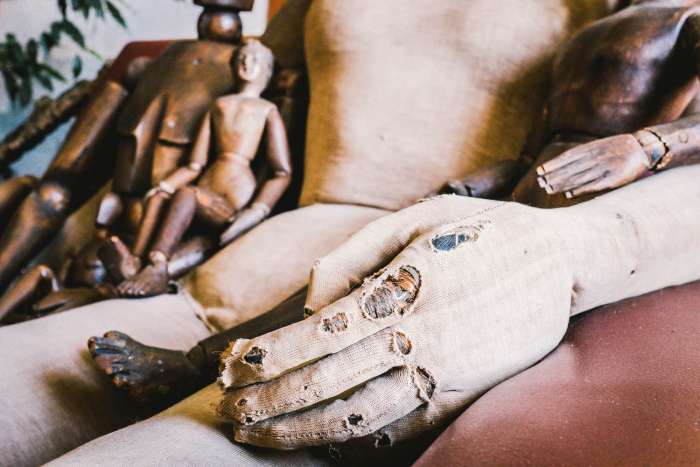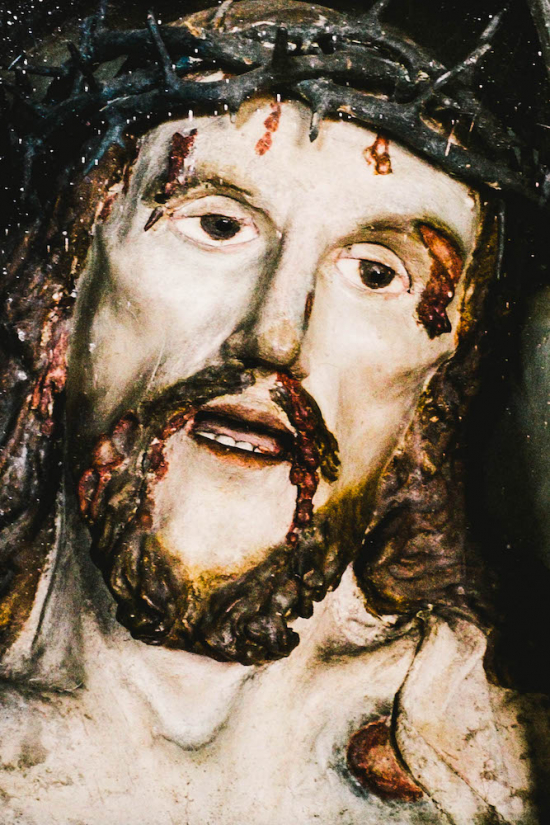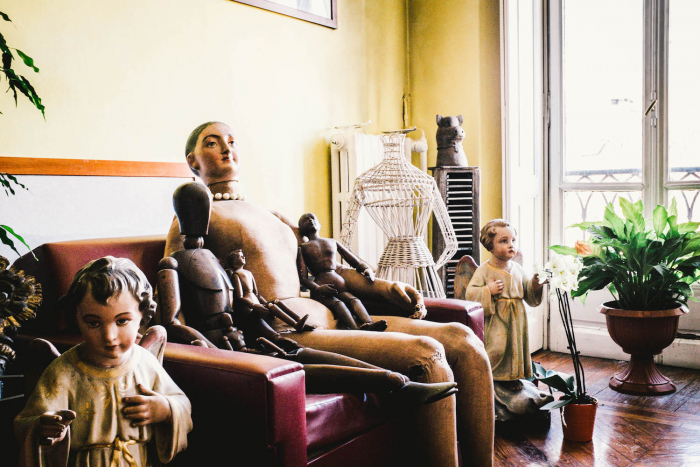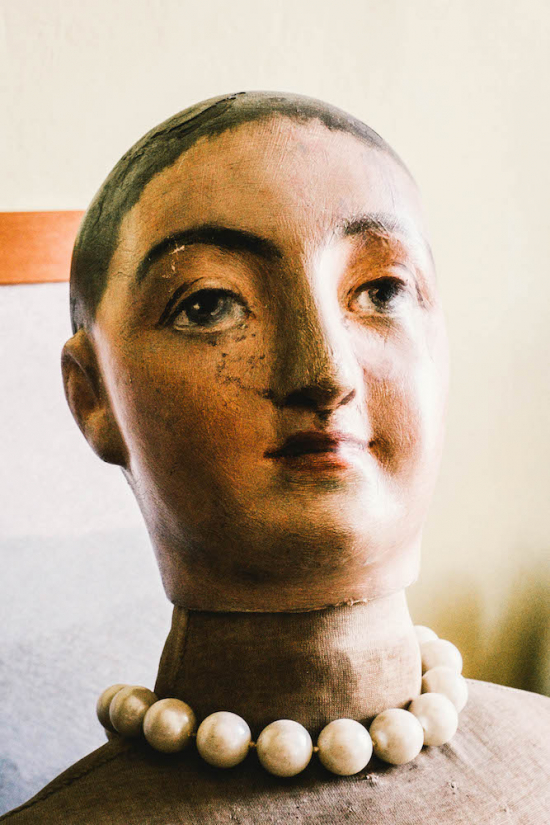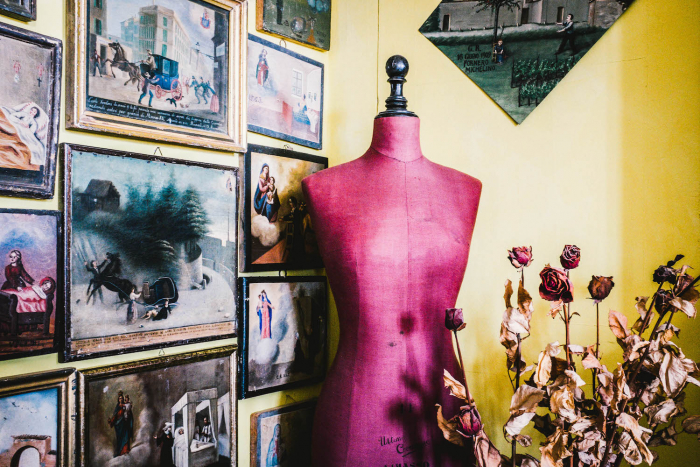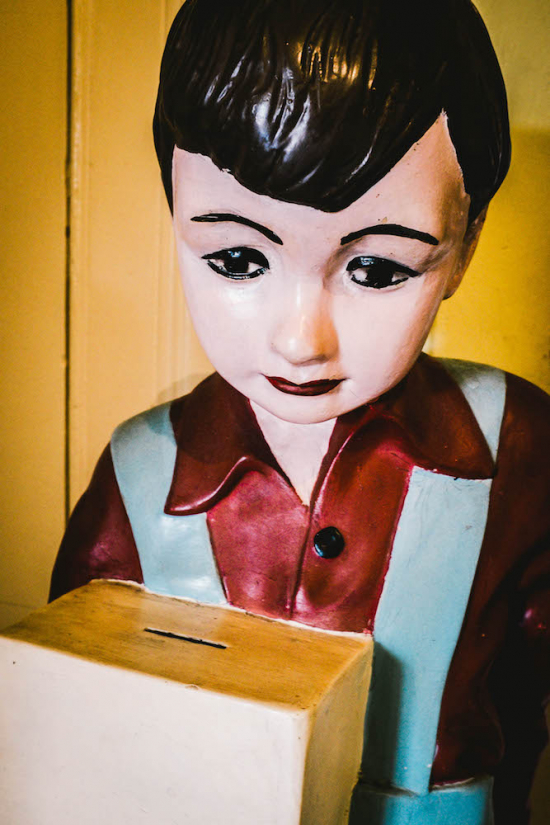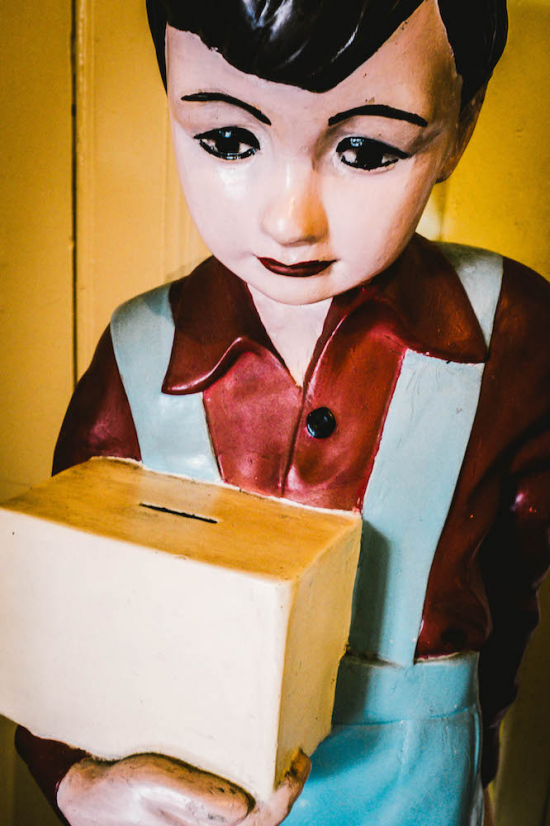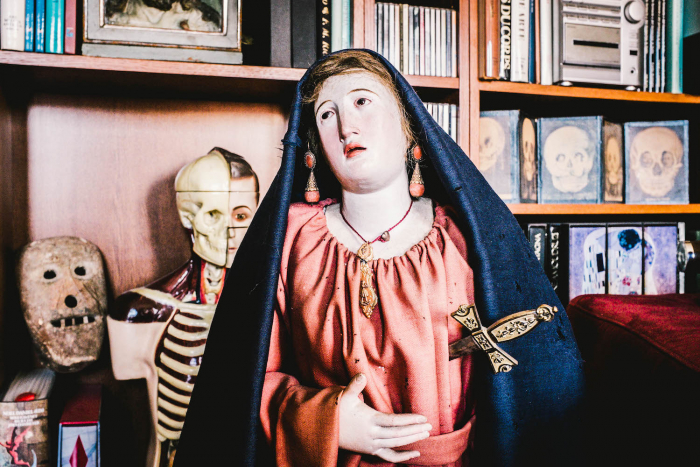“Ever since I was a child I have been collecting anything and everything, carrying on many parallel collections at a time, both the most ordinary ones such as coins and stamps (inherited from my father), and trading cards for which I was rather crazy, stickers... but then, at the age of 12/13, in Cuneo, near my house, there was a street market run by an association that used to collect and sell objects for charity, and there you could find items of any kind at a very low price. It was not an antiques market. Old alarm clocks, coffee grinders... objects of the rural culture. I started to collect old irons, maybe because I had two of them at home that had belonged to my grandmother and when you have at least two objects you can already call it a collection. The collection has grown to the point of making me famous all over the world. There’s a whole lot of societies and fairs dedicated to irons... it is a very rich tradition and from a business perspective it was useful to learn the ropes and learn to trade, sell and understand the dynamics of this activity. Until one day I found an ancient wooden stethoscope in Cherasco, at a stall of women philanthropists. It aroused my curiosity, I studied it, I put it up for sale and my new passion was born. I specialized in medical surgical tools and met Fausto Gazzi, a collector like me. Fausto was a step further and had an extremely wide and deep knowledge. We contaminated each other, I was more unbalanced towards the scientific side, he was more interested in naturalistic stuff, so we both got worse and added the other’s pathology to our own.
There are two families of collectors. Those who have a solipsistic idea of how to enjoy the collection: they amass, collect objects, but do not share them with anybody. And those like Fausto and I, whose greatest pleasure lies in the possibility of sharing their own collections, a pleasure that in 2010 led us to open the Nautilus in the centre of Turin, which we called a shop to “provide a social alibi” to our passion which at the time was still a niche activity. The necessity to sell in order to finance the collection is a sort of retaliation law, even if the collector by definition buys and doesn’t sell, which is the reason why Nautilus has never been a true shop, there have never been precise opening hours, prices used to change every week... but this has always been satisfactory for us because it built relationships that went beyond the mere business. It was a meeting place for lovers of objects who liked to share them. For a collector, walls are a shelter, a shell enclosing the objects he loves, he is like a spider that builds its web to get protection against the world and the collection is his self-representation in front of the world. It was a pleasure to meet people at the Nautilus, I could share the things that moved me, it would have been different to do it while sitting in a café.
It was a #wunderkammer, a special place where to astonish but also to get satisfaction showing your inner world through objects. I was told that the Nautilus looked like a mixture of nonsensical stuff, maybe because I fall in love with many things, but the collector himself is the common thread behind every collection. We used to create a dialogue between things, this happens when you put together some objects although you believe they have nothing to do with each other and a dialogue is born, new meanings are created. We used to mix stuffed animals and elements of industrial archaeology, anatomical models with waxes and formalin preparations. There wasn’t any kind of division in sections. It was meant to be an experience, something created to convey our passions. I enjoyed observing how different people used to notice different objects as they stepped into the shop, as if there were different levels of interpretation depending on the moment. I had a lot of fun listening to the conversations of those looking inside through the shop window, those who gazed in, commented and did not enter, those who –although intrigued– did not allow themselves to experience the unknown. Some people stepped in and let themselves be overwhelmed, and I love to tell everything I know on any single object. Each and every object is the result of a journey a situation a memory and the emotion of discover. Every single piece of my collection, when I see it, makes me re-experience the moment we met. It is the object that comes towards us, I do not have paranormal ambitions, but some encounters were predetermined: I shouldn’t have been there but I was, and it (the object) was there as well. They talk to me the moment I find them, in a sense, and I talk to them.
The Nautilus was our wunderkammer. When it is born, the wunderkammer is based on wonder, it isn’t the result of a systematic approach. There is a desire for accumulation to it. Stratification and accumulation move me! With the coming of the Age of Enlightenment, in the Eighteenth Century, collections and cabinets of wonders mixing science, nature, #mirabilia etc. were dismembered… they were distributed among several museums and placed in the impersonal shop windows that we know all too well, thus interrupting and cutting the lines of the dialogue created by the collector.
THE AGE OF REASON brings back order to a parameter that was no longer acceptable: wonder born from the lack of knowledge. Once people were amazed by an ostrich’s egg (in Europe there were only hens)… then the Age of Enlightenment says “it’s only amazement” and explains it, it places the egg inside a natural science museum which used to stand on the head of a Madonna, and there you see the ostrich’s egg: just an egg that is bigger than a hen’s. We could say the Age of Enlightenment is the killer of amazement and wonder. The killer of curiosity. You are not stimulated to create your own knowledge: it is already given. To find a shop that offers something we do not understand, in a different order, provokes discussion, because you have to strive to be open to a new approach. The Age of Enlightenment was connected to the rejection of what was more instinctive: if you can label it, it exists, if you cannot label it... The soul? I believe in it. I believe in an inner dimension that makes me a human being, not only experience. And I believe that the soul of any object lies in its story, a flow that has led it to me. Hands have created, protected and shielded it, then they have tried to destroy it... and in spite of all this, it resisted until it found me.
Now I am devoting myself to my most recent passion: EX-VOTOS, which really captivate me and on which I am focusing my research activity. I love the dimension of the sacred as seen from an artistic perspective but adapted to popular taste, the representation of a genuine, maybe innocent, gesture of faith, where the aspect of wonder is present and where we can see wonder as a reaction to what is considered a miracle and the act of sharing this miracle with the community. There are all sorts of miracles. Those connected to illness, for example, but the ones that fascinate me the most are those concerning accidents: the woodcutter who is crushed by a trunk but doesn’t die, the child that should have drowned, the believer saved by a miracle... A devout has this vow painted to let everybody know that he was saved by the Virgin Mary. It is a moving artistic expression, and yet the EX-VOTOS have been nearly scorned for years and for the Church they almost deserve to be hidden because they are considered dubious and connected to paganism. Whenever it could, the Church tried to throw them away, burn them or sell them to second hand dealers. Even critics have never acknowledged their artistic value. In the best case scenario, votive objects are actually painted by specialized town painters, but always with very modest results, sometimes they are made by the miraculous survivors themselves who realized these paintings shamelessly and completely disregarding perspective and proportions. In sanctums they occupy entire walls. V.F.G.R. (Voto Fatto Grazia Ricevuta / Vow Made Grace Received). P.G.R. (Per Grazia Ricevuta / For Grace Received). Now I have 150 of them. My favourite ones, I have hung them on the walls, but as I don’t have much room, I stockpile the others inside closets. There is also a tradition of votive objects reproducing parts of the body, a cheaper one because they are produced and printed in series, and sold at market stalls. Frida Kahlo and Diego Rivera used to collect EX VOTOS, it is a very important tradition in Mexico.
EX VOTOS should be actually placed inside churches, and when somebody takes them away the bond that had been created is kind of broken, but as the parish priest is obliged to display all the EX VOTOS that believers have brought in, when there is no room left he must remove the older ones in order to display the new ones. Therefore you can now find the most recent ones inside the churches, while the oldest and most valuable ones have been lost. Two aspects coexist in me: the awareness coming from maturity –which implies a certain cynicism– and the capability to become fond of some objects and be amazed like children, who are fascinated by an unknown world (Senex Puerilis). A collector is in search for an experience that can take him away from the daily routine, so when, at six o’clock in the morning, I see somebody put a voting object down on the ground in a street market, it is like an Epiphany, a revelation! As it happened when I was a little boy, every time I opened a pack of stickers. Another fundamental aspect of my being a collector is the salvific mission, namely the desire to save the objects I love from time and oblivion. I feel bad when I think of the thousands of EX VOTOS that have been thrown away or burnt, and in a sense I save them. I will take care of them. Share them with other aficionados. To save an object from time is very satisfactory for any collector. And when I am gone… if I am lucky, my collection will make me immortal, one of the best destinations would be a museum, public display, otherwise –and this is one of the deepest sorrows– my collection will be given to the first antique dealer who will buy and dismember it.”
